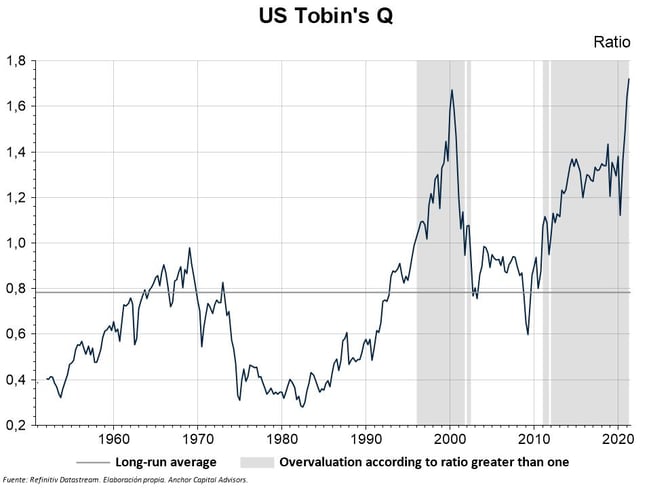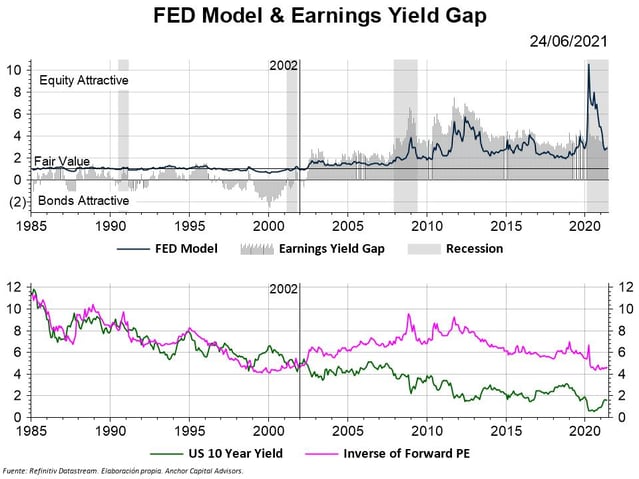S&P 500 - Is It Overvalued?
The rally in the American stock market from 2010 to 2020 (the longest in history), and since the pandemic so far, makes us wonder if it is a good time to invest in equities or if a correction is looming.
There are many financial indicators to monitor the market value, so we will analyze some of the main ones:
- Shiller's CAPE: measures the price per profit that is being paid by a company, but adjusted for economic cycles. The higher Shiller's P/E ratio, the more we pay per 1 unit of company profit and the lower the profitability we would obtain from that profit. Currently, Shiller's P/E of the S&P 500 is 38x, and the historical average is 16x, which would indicate that we are paying well above the profit of the companies and that the market would be very expensive.
- Tobin's Q: is the ratio between the value of a company on the stock market and the value at the replacement cost of all its assets. The theory would indicate that it has to be close to 1 since otherwise, it would be convenient for companies to issue shares and capitalize or sell assets and buy shares. The graph indicates a potential overvaluation since we are at historical highs, that is, companies are worth more in the market than if we value their real assets.

- FED Model: analyzes the difference between the performance of American companies and that of the 10-year US Treasury bond. The model indicates that the market is still cheap at levels close to the 3% positive yield gap. This is related to the purchase of assets by the FED that has caused a fall in US 10-year rates. This makes the risk 'appreciate' and less profitable since a bond currently yields barely 1.5% at 10 years.

In conclusion, depending on how the market is analyzed, arguments for or against can be found. There is a tendency to value companies more for the benefits they generate or are capable of generating than for their underlying assets. The technological revolution has caused many companies with low capital intensity and greater flexibility to achieve extraordinary profits, which investors are rewarding at the moment. If those benefits are sustainable in the long term and are being paid at a fair price, only time will tell.

-1.jpg)